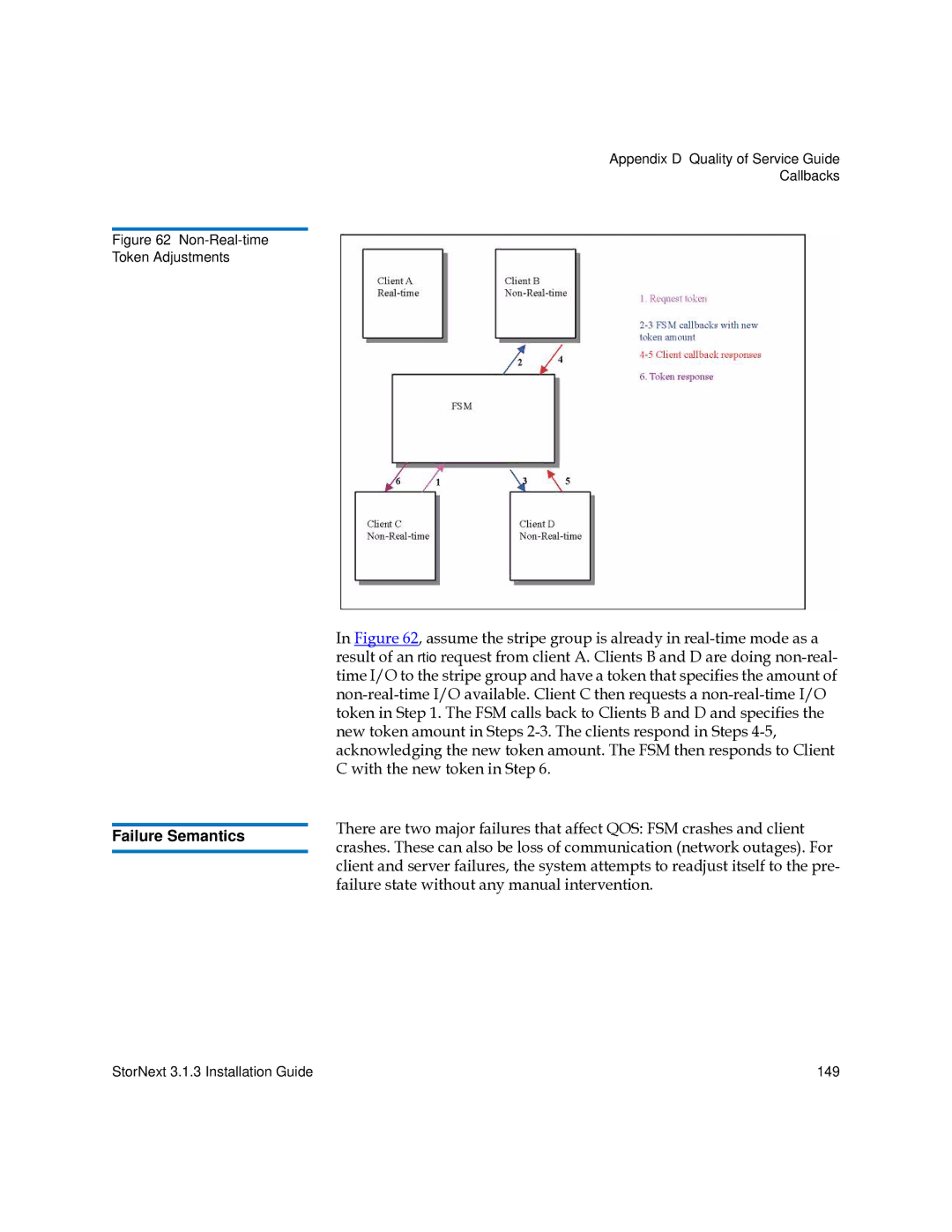
Appendix D Quality of Service Guide
Callbacks
Figure 62 Non-Real-time
Token Adjustments
| In Figure 62, assume the stripe group is already in | |
| result of an rtio request from client A. Clients B and D are doing | |
| time I/O to the stripe group and have a token that specifies the amount of | |
| ||
| token in Step 1. The FSM calls back to Clients B and D and specifies the | |
| new token amount in Steps | |
| acknowledging the new token amount. The FSM then responds to Client | |
| C with the new token in Step 6. | |
| There are two major failures that affect QOS: FSM crashes and client | |
Failure Semantics | ||
crashes. These can also be loss of communication (network outages). For | ||
| ||
| client and server failures, the system attempts to readjust itself to the pre- | |
| failure state without any manual intervention. |
StorNext 3.1.3 Installation Guide | 149 |
